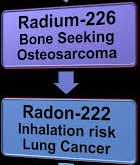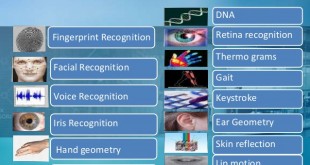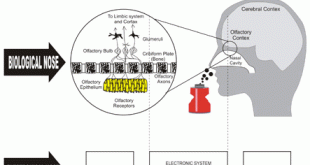Today’s terrorist landscape is more fluid and complex than ever influenced by economic and social conditions that breed extremism and the threat landscape is less predictable. The Countries face an increasingly complex terrorist landscape, populated by a diverse array of actors employing new technologies and tactics across physical and cyber …
Read More »Non-Line-of-Sight Imaging can be transformative in medicine, robotics, manufacturing, and security
We see things because our eyes are sophisticated light detectors: they constantly capture the light rays bouncing off nearby objects so our brain can construct an ever-changing impression of the world around us. Similarly in a camera, All the light traveling from the object enters a single lens before it …
Read More »Health impacts of Radionuclides in Drinking Water and technology solutions to remove them
Radionuclides are types of atoms that are radioactive. The most common radionuclides in drinking water are radium, radon and uranium. Radionuclides occur naturally as trace elements in rocks and soils as a consequence of the “radioactive decay” of uranium-238 (U-238) and thorium-232 (Th-232). As these rocks weather, the resulting clays …
Read More »New Physical and behavioral Biometrics technologies with increased accuracy and security being developed
Identity theft is increasingly a 21st-Century problem. As more data moves off of physical paper and onto Internet-connected servers, the chances of that data getting stolen increases as well. According to the FTC, there were 2.8 million fraud reports from consumers in 2021, a nearly 27% increase over the 2.2 …
Read More »New Airport Security technology breakthroughs combatting increasingly complex threat environment
Commercial aviation plays a central role in our daily lives and is an essential part of the national economy. More than 100,000 flights take off and land every day across the world. More than billion passengers go by air every year as do over 20 million tonnes of freight. It …
Read More »DOD looks to secure Content delivery Network (CDN) services to stream its mission-critical and sensitive information
A Content Delivery Network (CDN) is a globally distributed network of web servers or Points of Presence (PoP) whose purpose is to provide faster content delivery. The content is replicated and stored throughout the CDN so the user can access the data that is stored at a location that is …
Read More »High Frequency Surface Wave Radars (HFSWR) for Ship detection and tracking far beyond the horizon
In recent years organized crime in maritime regions has flourished, threatening both secure flow of goods from Exclusive Economic Zones (EEZ) and lives of participants in the marine operations. Security threats and humanitarian risks caused by trafficking (drugs, weapons, etc.), irregular transport of migrants, maritime terrorism or even piracy are …
Read More »Countries advance Border management Strategy and technology to counter terrorists, and criminals, smuggling weapons, and illegal drugs, and counterfeit goods
In an increasingly globalised and interconnected world it has become simple for people and goods to cross borders and so for terrorists. America’s borders and ports are busy places, with tens of millions of cargo containers and hundreds of millions of lawful travelers entering the country each year, while tens …
Read More »Threat of Radiological warfare, Radiological weapons and Dirty Bombs
The threats of chemical, biological, radiological, nuclear and explosive (CBRNE) hazards continue to advance. CBRN weapons are some of the most indiscriminate and deadly weapons in existence today, with capability to affect large population in wide geographical area and in short time. The release of Chemical, Biological, Radiological and Nuclear …
Read More »Compact Electronic noses can monitor air quality, diagnoze diseases to biohazards like covid-19, explosives and nerve gas
Government and local law enforcement agencies have employed canines for decades to sniff explosives and such banned goods as fresh produce, exotic wildlife, undeclared currency and illicit drugs. Now researchers are developing electronic noses imitating the sense of smell of humans and animals especially dogs. The smells are composed of molecules, …
Read More » International Defense Security & Technology Your trusted Source for News, Research and Analysis
International Defense Security & Technology Your trusted Source for News, Research and Analysis









